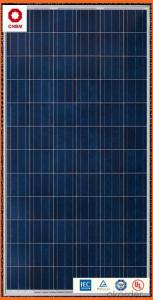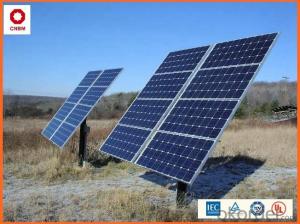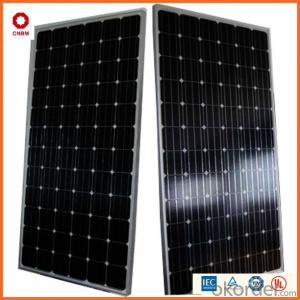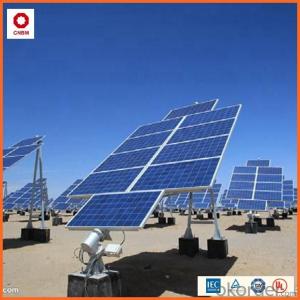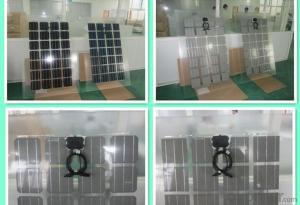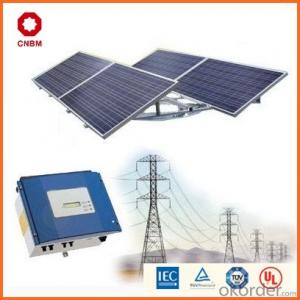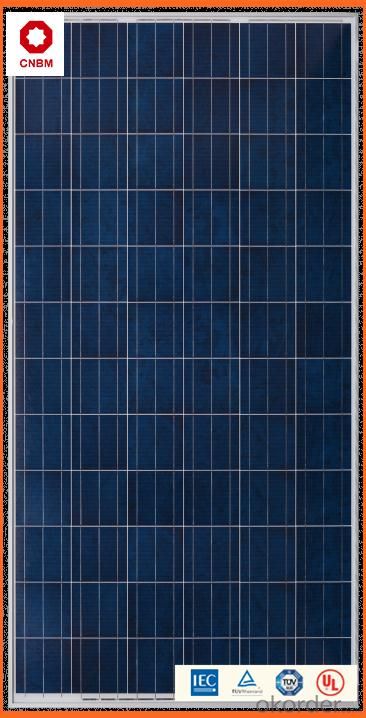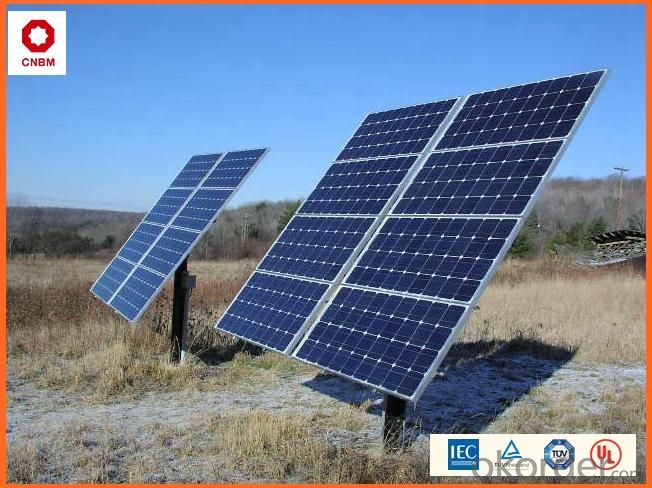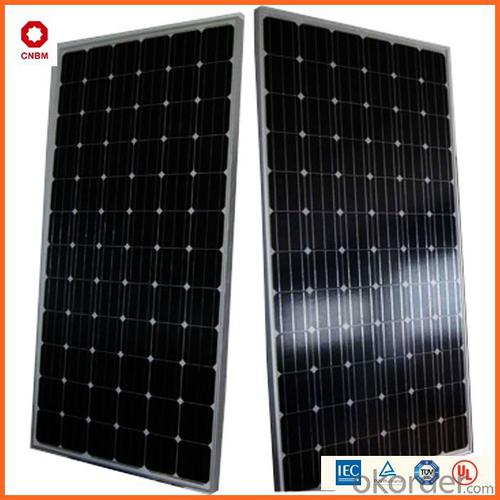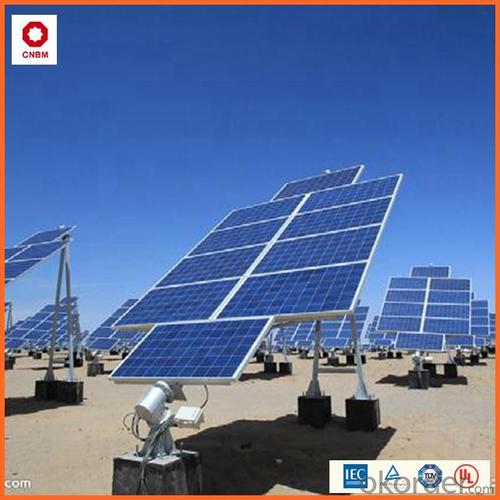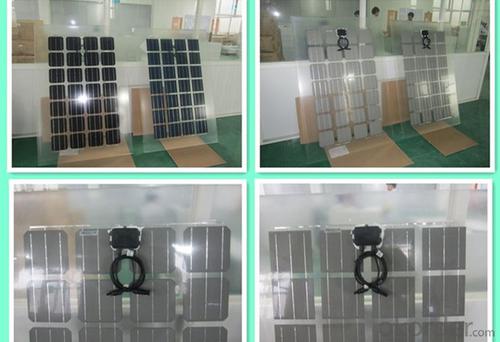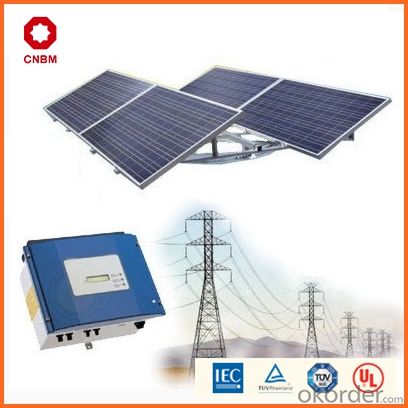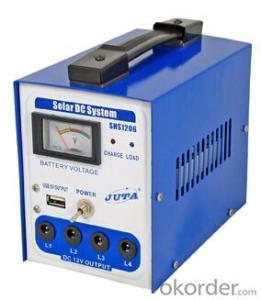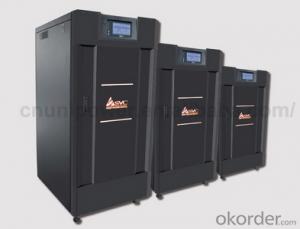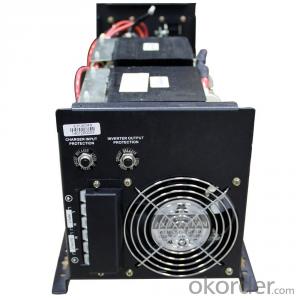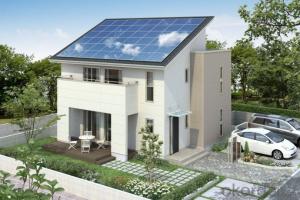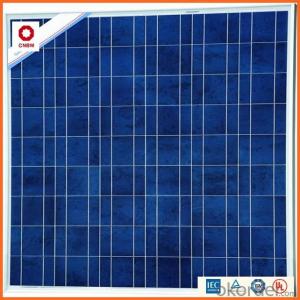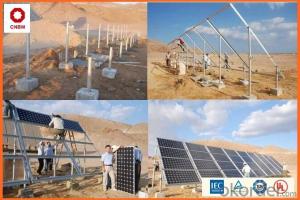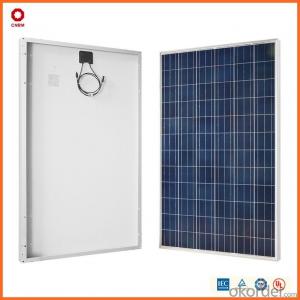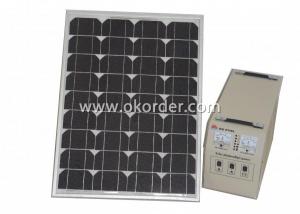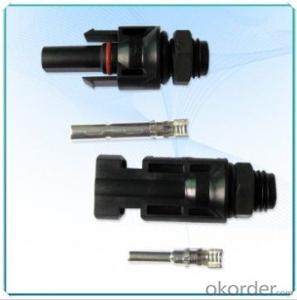Agl Solar Energy Systems 100w Small Solar Panels in Stock China Manufacturer
- Loading Port:
- China main port
- Payment Terms:
- TT OR LC
- Min Order Qty:
- 1 watt
- Supply Capability:
- 10000000 watt/month
OKorder Service Pledge
OKorder Financial Service
You Might Also Like
Specification
Product Description:
Hot Sale !!! Quality and Safety of Small Poly Solar Panel 5w~150w
1. Rigorous quality control meets the highest international standards.
2. High-transmissivity low-iron tempered glass, strong aluminium frame.
3. Using UV-resistant silicon.
4. IS09001/14001/CE/TUV/UL
Warranties of Small Poly Solar Panel 35~85w
1. 10 years limited product warranty
2. 15 years at 90% of the minimal rated power output
3. 25 years at 80% of the minimal rated power output
Specification
Characteristics of Poly solar panels CNBM (245-320W) | |||||
Max Power Voltage Vmp(V) | 30.3 | 30.8 | 31.1 | 31.4 | 31.85 |
Max Power Current Imp(A) | 7.60 | 7.64 | 7.73 | 7.81 | 7.85 |
Open Circuit Voltage Voc(V) | 36.1 | 36.6 | 37 | 37.3 | 37.68 |
Short Circuit Current Isc(A) | 8.50 | 8.55 | 8.65 | 8.75 | 8.85 |
Max Power Pm(W) | 230W | 235W | 240W | 245W | 250W |
Temperature Coefficient of Cells Poly solar panels CNBM (245-320W) | |
NOCT | 45± 2 |
Temperature Coeffucients of Isc | 0.0492 |
Temperature Coeffucients of Voc | -0.3374 |
Temperature Coeffucients of Voc | -0.4677 |
Mechanical Data of Poly solar panels CNBM (245-320W) | |
Dimension | 1638 × 982 × 40 mm |
Weight | 19.5 kg |
No. of Cells and Connections | 60 (6 ×10) |
Tolerance | 0 ~ + 5 W |
Cell | Monocrystalline Cell 156 × 156 mm |
Packing | 624 Pcs/40ft(H) Container |
Limits of Poly solar panels CNBM (245-320W) | |
Operating Temperature | -40 to +85 |
Storage Temperature | -40 to +85 |
Max System Voltage | 1000VDC(IEC) / 600VDC(UL) |
Features of our products:
• High conversion efficiency mono/poly-crystalline amorphous silicon solar cells
• Modules incorporate high performance bypass diodes to minimize the power drop caused by shading
• High transmittance, low-iron tempered glass
• High performance EVA encapsulant to prevent destroying and water.
• AI frame: without screw, corner connection. 8 holes on the frame can be installed easily
• Good performance of preventing from atrocious weather such as wind and hails
• Certifications: CE IEC TUV VDE UL, Class I
• 10 years 90% power output warranty
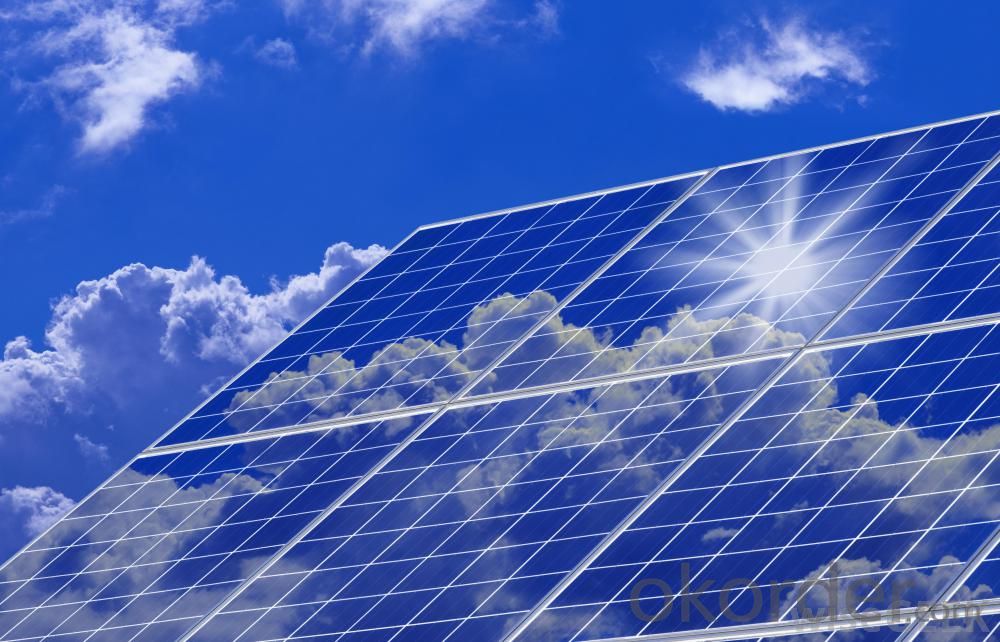
Shipping of Small Poly Solar Panel 35~85w
By Sea | Delivery from Shanghai or Ningbo seaport |
By Air | Departure from Shanghai Pudong Airport |
By Express | Post by DHL, EMS, UPS, TNT. |
Features of our products:
• High conversion efficiency mono/poly-crystalline amorphous silicon solar cells
• Modules incorporate high performance bypass diodes to minimize the power drop caused by shading
• High transmittance, low-iron tempered glass
• High performance EVA encapsulant to prevent destroying and water.
• AI frame: without screw, corner connection. 8 holes on the frame can be installed easily
• Good performance of preventing from atrocious weather such as wind and hails
• Certifications: CE IEC TUV VDE UL, Class I
• 10 years 90% power output warranty
As a professional Solar Panel manufacturer and Supplier in China, we have our customers come around the whole world and our specialization has got a worldwide recognition. Meanwhile, with our superior quality, competitive price, prompt and excellent service, As main role in trade section of CNBM Group, CNBM International Corporation supplies products including Monocrystalline Solar Panel, Polycrystalline Solar Panel ( multicrystalline silicon Solar Panel) have received and enjoyed famous reputation in many countries and regions in the world.
- Q: Can solar energy systems be used in mining operations?
- Yes, solar energy systems can be used in mining operations. Solar power can provide a sustainable and reliable source of electricity for various mining activities, such as powering equipment, lighting, ventilation, and processing plants. It reduces dependence on traditional fossil fuel-based energy sources, lowers operational costs, and minimizes environmental impacts. However, the feasibility and effectiveness of solar energy systems in mining operations depend on factors like location, energy demands, and technical considerations.
- Q: Can solar energy systems be used for powering shopping malls or retail centers?
- Absolutely, shopping malls and retail centers can definitely utilize solar energy systems to power their operations. In fact, numerous shopping malls and retail centers worldwide have already embraced solar energy systems to meet their energy requirements. These establishments can install solar panels on their rooftops or in parking lots to capture sunlight and transform it into usable electricity. There are numerous advantages to using solar energy systems in shopping malls and retail centers. Firstly, they offer a consistent and reliable source of clean and renewable energy. This decreases reliance on fossil fuels, reduces carbon emissions, and contributes to a more sustainable future. Additionally, solar energy systems can significantly reduce energy costs for these establishments. Once the initial installation costs are covered, the electricity generated by solar panels is essentially free. Furthermore, solar panels can be seamlessly integrated into the architectural design of shopping malls and retail centers, providing a visually appealing and distinctive feature. This can enhance the overall aesthetic appeal of the buildings and attract more customers. Additionally, solar panels can provide shade in parking lots, protecting vehicles from direct sunlight and minimizing the need for air conditioning. However, it is important to consider various factors such as available space, local regulations, and financial considerations when determining the feasibility of installing solar energy systems in shopping malls or retail centers. Effective planning and design are crucial to ensure optimal utilization of solar energy and maximize the associated benefits. All in all, solar energy systems offer a practical and sustainable solution for powering shopping malls and retail centers. Their adoption not only reduces environmental impact but also provides long-term cost savings and promotes a positive brand image for businesses.
- Q: What are the advantages and disadvantages of small-scale solar power generation system?
- Solar energy inexhaustible, the earth's surface to accept the solar radiation energy, to meet the global energy demand 10 thousand times. As long as the installation of solar photovoltaic systems in the world's 4% deserts, the power can meet the needs of the world. Solar power is safe and reliable, does not suffer from the energy crisis or fuel market instability impact; solar energy everywhere, to the nearest power, do not have to avoid long distance transportation, long distance transmission line loss; solar energy without fuel, the operation cost is low
- Q: How does solar energy impact the environment?
- Solar energy has a positive impact on the environment in several ways. Firstly, it reduces greenhouse gas emissions, which are the primary cause of climate change. Solar panels generate electricity without emitting any pollutants or greenhouse gases, unlike traditional fossil fuel-based power plants. By utilizing solar energy as a clean and renewable source of power, we can significantly reduce our carbon footprint and mitigate the detrimental effects of climate change. Secondly, solar energy helps in conserving water resources. Conventional power plants, such as coal or natural gas, require vast amounts of water for cooling purposes. In contrast, solar panels do not require water for their operation, leading to a significant reduction in water consumption and the strain on local water supplies. This is especially crucial in arid regions or areas facing water scarcity. Furthermore, solar energy helps in preserving biodiversity and ecosystems. The extraction and burning of fossil fuels often result in habitat destruction and pollution, which directly harm wildlife and plant species. Solar energy, on the other hand, has minimal impact on the environment during its operation. By promoting solar energy, we can reduce the need for destructive energy practices and protect fragile ecosystems. Additionally, solar energy has a positive impact on air quality and public health. Burning fossil fuels releases harmful pollutants such as sulfur dioxide, nitrogen oxides, and particulate matter, which contribute to air pollution and respiratory diseases. By transitioning to solar energy, we can significantly reduce the emissions of these pollutants, leading to cleaner air and improved public health outcomes. Finally, solar energy helps in reducing dependence on finite and imported energy sources. By harnessing the power of the sun, countries can become more energy independent and less reliant on fossil fuels, which often need to be imported. This not only enhances energy security but also helps to reduce geopolitical tensions and conflicts over scarce energy resources. In conclusion, solar energy has a positive impact on the environment by reducing greenhouse gas emissions, conserving water resources, preserving biodiversity, improving air quality, and promoting energy independence. By embracing solar energy on a large scale, we can mitigate climate change, protect ecosystems, and create a sustainable future for generations to come.
- Q: Can solar energy systems be used in areas with high seismic activity?
- Yes, solar energy systems can be used in areas with high seismic activity. However, it is essential to design and install these systems with seismic-resistant features in mind to ensure their structural integrity during earthquakes. Reinforcing the mounting structures, using flexible connectors, and implementing proper anchoring techniques can help mitigate potential risks. Additionally, regular inspections and maintenance are crucial to ensure the ongoing safety and functionality of solar energy systems in seismic-prone regions.
- Q: What are the different installation requirements for solar energy systems?
- The installation requirements for solar energy systems can vary depending on the specific type and size of the system, as well as the location and local regulations. However, there are some general installation requirements that apply to most solar energy systems. Firstly, a suitable location for the installation of solar panels is crucial. Ideally, the panels should be installed in an area that receives a significant amount of direct sunlight throughout the day. The roof of a building is a common location for solar panel installation, but ground-mounted systems are also possible. The roof or ground on which the solar panels will be installed must be structurally sound and able to support the weight of the panels. In the case of a roof-mounted system, the roof should be in good condition and able to handle the added weight and potential wind loads. If the roof requires repairs or reinforcement, these should be addressed prior to installation. In terms of orientation and tilt, the solar panels should be positioned to maximize their exposure to sunlight. In most cases, the panels should face south in the northern hemisphere or north in the southern hemisphere to receive the most sunlight. The optimal tilt angle will depend on the latitude of the installation site, and it should be adjusted accordingly. The electrical wiring and connections for the solar energy system should be properly installed and comply with local electrical codes and regulations. This includes the use of appropriate wiring, junction boxes, and disconnect switches. It is recommended to hire a licensed electrician to handle the electrical aspects of the installation. Depending on the specific system, additional components such as inverters, batteries, and charge controllers may be required. These components should be properly sized and installed according to the manufacturer's instructions and local regulations. Finally, it is important to obtain any necessary permits and approvals from local authorities before installing a solar energy system. This may include building permits, electrical permits, and inspections to ensure compliance with safety and quality standards. In summary, the installation requirements for solar energy systems involve selecting a suitable location, ensuring structural integrity, optimizing orientation and tilt, complying with electrical codes, installing additional components as needed, and obtaining necessary permits and approvals. It is recommended to work with a qualified solar installer who can provide expert guidance and ensure a safe and efficient installation.
- Q: How does a solar thermal system convert sunlight into heat?
- A solar thermal system converts sunlight into heat by absorbing the sun's energy through solar collectors, typically made of glass or metal. These collectors contain a fluid, such as water or antifreeze, which is heated by the absorbed sunlight. The heated fluid is then circulated through pipes or tubes to transfer the heat to a storage tank or directly to a building's heating system. This process allows the sunlight to be converted into usable heat energy for various applications, such as heating water or spaces.
- Q: Can a solar energy system be installed on a residential apartment complex?
- Yes, a solar energy system can be installed on a residential apartment complex. In fact, many apartment complexes are already utilizing solar energy systems to generate electricity. These systems can be installed on the rooftop of the apartment building or on a ground-mounted structure nearby, depending on the available space and sunlight exposure. By installing a solar energy system, apartment complexes can reduce their reliance on traditional grid electricity, lower their carbon footprint, and potentially save on electricity costs. Additionally, residents can benefit from reduced energy bills and increased sustainability. However, it is important to consider factors such as local regulations, building structure, and ownership arrangements when planning to install a solar energy system on a residential apartment complex.
- Q: Can solar energy systems be used for powering off-grid eco-cities?
- Yes, solar energy systems can definitely be used to power off-grid eco-cities. Solar panels are a sustainable and renewable energy source that can efficiently generate electricity from sunlight, making them ideal for eco-friendly communities. By installing solar panels on rooftops or in open spaces, off-grid eco-cities can harness the power of the sun to meet their energy needs. Additionally, advancements in battery storage technology allow for the storing of excess solar energy, ensuring a continuous power supply even during periods of low sunlight. Overall, solar energy systems offer a viable and environmentally friendly solution for powering off-grid eco-cities.
- Q: Are there any risks of electrical malfunctions or failures during extreme weather events with solar energy systems?
- Solar energy systems may encounter risks of electrical malfunctions or failures during extreme weather events. While solar panels are designed to withstand various weather conditions, such as rain, snow, and wind, they remain susceptible to damage in severe weather events like hurricanes, tornadoes, or severe storms. In extreme weather, high winds have the potential to physically harm solar panels by dislodging them from their mounts or causing them to break. Heavy snowfall can also cover the panels, reducing their efficiency and potentially causing them to collapse due to the weight. Additionally, lightning strikes during thunderstorms can jeopardize the electrical components of the solar energy system, leading to potential malfunctions or failures. Nevertheless, it is important to note that solar energy systems are typically equipped with safety measures to minimize these risks. Many solar panels undergo testing and certification to ensure they can withstand specific wind speeds and snow loads. Sturdy and secure mounting systems are utilized, and electrical components often have surge protection to safeguard against lightning strikes. Furthermore, solar energy systems are interconnected with the power grid, enabling a seamless transition to grid power during extreme weather events if needed. This helps mitigate the impact of potential malfunctions or failures. To mitigate the risks associated with extreme weather events, regular maintenance and inspection of solar energy systems are crucial. Periodic check-ups and cleaning can ensure the panels are in good condition, and any signs of damage or wear can be promptly addressed. It is also advisable to seek guidance from a professional installer or technician who can offer advice on specific weather-related risks and potential solutions.
Send your message to us
Agl Solar Energy Systems 100w Small Solar Panels in Stock China Manufacturer
- Loading Port:
- China main port
- Payment Terms:
- TT OR LC
- Min Order Qty:
- 1 watt
- Supply Capability:
- 10000000 watt/month
OKorder Service Pledge
OKorder Financial Service
Similar products
Hot products
Hot Searches
Related keywords
